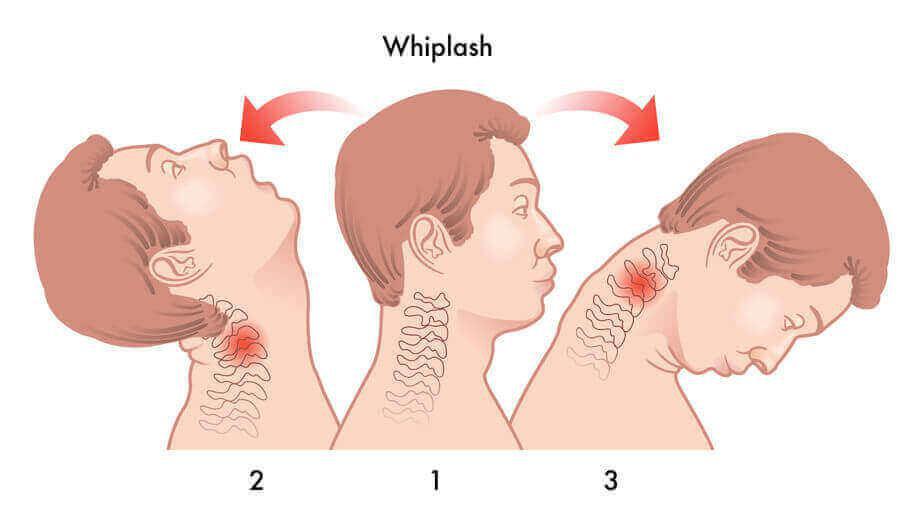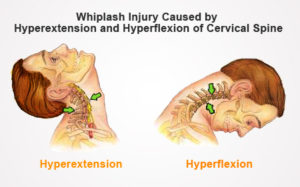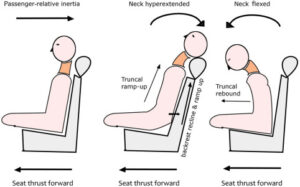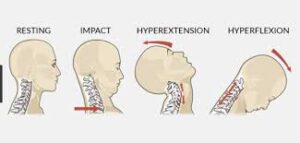

Ever had one of those days where you are cruising along in your car, enjoying your favorite tunes, when suddenly—bam!
You get rear-ended, and your head does that involuntary “whip” motion that would make a bobblehead jealous.
Whiplash: it is painful, annoying, and, as it turns out, it can mess up your neck posture in more ways than one.
Today, we are exploring how a seemingly simple neck injury like whiplash can snowball into chronic issues, like forward head posture.
In this article, BestForwardHeadPostureFix shall cover everything from the mechanics of whiplash to the lasting impact it can have on your neck and spine.
Spoiler alert: It is not just about temporary soreness.
We will also look at real-life examples of how this injury changes your body over time and examine what science has to say.
Article Contents:
- What is Whiplash?
- The Biomechanics of a Whiplash Injury
- How Whiplash Injury Causes Forward Head Posture
- The Role of Muscle Imbalances and Tension
- Real-Life Example: Meet Sarah, The Office Worker
- Whiplash Injury and Neck Stiffness
- Whiplash Injury and Poor Neck Posture: A Vicious Cycle
- The Long-Term Impact of Whiplash on Posture
- Conclusion: The Unwanted Legacy of Whiplash
What is Whiplash?
Before we dive into the meat and potatoes of forward head posture, let us define whiplash.
Whiplash is a neck injury that occurs when your head is suddenly jerked backward and then forward, like a whip cracking.
This rapid motion can stretch and tear the muscles, ligaments, and tendons in your neck.
It is commonly seen in car accidents but can also occur during sports activities or even from a fall.
Dr. Arthur Mallory, a specialist in physical rehabilitation, describes whiplash as “a soft tissue injury with hard-hitting consequences.”
The impact may feel like a fleeting inconvenience, but it can create a cascade of issues, particularly with neck posture.
The Biomechanics of a Whiplash Injury
Let’s talk physics for a moment (do not worry, I shall keep it painless).
When your head is jolted backward and then thrust forward, the cervical spine experiences intense stress.
This violent motion can misalign the cervical vertebrae and stretch the surrounding ligaments, compromising the natural curve of your neck.
The journal Spine published a study showing that the sudden extension and flexion of the neck in a whiplash injury lead to micro-tears in the muscles and ligaments.
Over time, this trauma can weaken the neck’s support system, making it harder to hold your head in a proper position.
How Whiplash Injury Causes Forward Head Posture?
A quick look at how a seemingly simple whiplash injury turns into a catastrophe for your neck posture:
The Sudden Snap:
Whiplash is not just a cool word—it is a violent flexion-extension injury usually caused by car accidents, sports, or sudden jolts. When your head whips back and forth like an angry bobblehead, soft tissues like ligaments, discs, and cervical muscles get stretched or torn.
Your Head = A Bowling Ball:
The average human head weighs 10-12 pounds. That is like balancing a bowling ball on a stick. After whiplash, the damaged muscles struggle to keep that bowling ball upright, so it starts migrating forward like it is scouting for trouble.
The Body’s Sad Compromise:
Forward head posture is your body’s way of saying, “Let me help!”—by shifting the head forward to reduce load on the damaged tissues. But this new setup creates more tension than a thriller novel.
Gravitational Chaos Ensues:
As per research in the American Journal of Physical Therapy, every inch your head moves forward adds about 10 extra pounds of force on your cervical spine. So, a 3-inch shift means your neck is holding 30+ pounds all day.
Muscle Fatigue & Imbalance Take Over:
Deep cervical flexors weaken. Upper traps and levator scapulae scream in protest. This new “normal” locks you into a dysfunctional loop where your body forgets how good posture felt.
It Does not Fix Itself:
According to a study in Spine Journal (2017), many whiplash-associated disorders persist beyond 6 months, leading to chronic postural compensation.
So yes, one snap, and suddenly your posture has commitment issues.
The Role of Muscle Imbalances and Tension
Now, let us add muscle imbalances into the mix.
After a whiplash injury, some neck muscles become overworked, while others weaken.
This imbalance creates a dysfunctional chain reaction.
The front neck muscles, which are supposed to help keep your head upright, become tight and shortened, while the upper back muscles weaken.
The Journal of Orthopedic & Sports Physical Therapy found that individuals with whiplash injuries are more likely to develop these muscle imbalances, leading to forward head posture.
The muscles in the front of the neck become chronically tight, making it nearly impossible to maintain a neutral spine.
Real-Life Example: Meet Sarah, The Office Worker
Let’s make this a bit more relatable.
Meet Sarah, a 32-year-old office worker from sunny California, USA.
Sarah got into a fender bender two years ago, resulting in a mild whiplash injury.
At first, she shrugged it off, thinking it was just temporary neck stiffness.
Fast forward a year, and Sarah noticed her head leaning forward more and more.
She also started experiencing headaches and upper back pain.
Her physical therapist explained that the whiplash injury caused her forward head posture.
The muscles in her neck had never fully recovered, and over time, they adapted in all the wrong ways.
Sarah is now on a mission to correct her posture, but it’s an uphill battle.
Whiplash Injury and Neck Stiffness
Whiplash injuries often lead to neck stiffness, which can significantly impact posture and overall neck health. Here’s how:
@ Protective Muscle Guarding: After a whiplash injury, neck muscles may tighten reflexively to protect the spine from further harm. This protective mechanism, while initially beneficial, can lead to prolonged muscle stiffness.
@ Development of Forward Head Posture (FHP): Chronic neck stiffness can make it challenging to maintain proper head alignment. To alleviate discomfort, individuals might unknowingly adopt a forward head position, where the head extends in front of the shoulders. Over time, this maladaptive posture can become habitual.
@ Altered Cervical Spine Mechanics: The sudden force from whiplash can disrupt the normal curvature of the cervical spine. Misalignments, particularly in the upper vertebrae (C1-C2 vertebrae), can cause certain segments to become “locked,” leading to compensatory hypermobility in other areas. This imbalance contributes to persistent neck stiffness and discomfort.
@ Impact on Daily Activities: Persistent neck stiffness can hinder routine movements, making activities like driving or working at a computer uncomfortable. This limitation often leads to decreased physical activity, which can further exacerbate stiffness and poor posture.
@ Psychological Factors: The discomfort and limitations resulting from chronic neck stiffness can lead to stress and anxiety. Psychological distress has been linked to prolonged neck pain, creating a cycle where mental stress exacerbates physical symptoms.
@ Importance of Ergonomics: Adopting proper ergonomic practices can alleviate strain on the neck. Ensuring that workstations are set up to promote neutral head and neck positions can prevent the worsening of FHP and associated stiffness.
@ Role of Physical Therapy: Engaging in targeted physical therapy can help restore normal neck function. Therapies may include exercises to improve range of motion, strengthen supportive muscles, and correct postural deviations.
@ Potential for Chronic Pain: If not addressed, the combination of whiplash-induced stiffness and poor posture can lead to long-term neck pain. Early intervention is crucial to prevent the transition from acute injury to chronic pain conditions.
Understanding the interplay between whiplash injuries, neck stiffness, and posture is essential for effective management and recovery.
Addressing these factors holistically can help break the cycle of pain and dysfunction.
Whiplash Injury and Poor Neck Posture: A Vicious Cycle
Once forward head posture sets in, it becomes a vicious cycle.
The more your head leans forward, the more strain it places on your neck and upper back.
This strain can exacerbate the symptoms of the original whiplash injury, such as pain, stiffness, and reduced range of motion.
Dr. Emily Jacobs from Physical Therapy Review describes this as “a downward spiral of postural dysfunction.”
Your body adapts to the new, inefficient posture, making it increasingly difficult to revert to a healthy alignment.
The Long-Term Impact of Whiplash on Posture
The long-term impact of a whiplash injury on posture is nothing to sneeze at.
Persistent forward head posture can lead to a host of other issues, including tension headaches, temporomandibular joint (TMJ) dysfunction, and even shoulder impingement.
Studies have shown that untreated whiplash injuries can make people more susceptible to developing chronic pain syndromes.
The Journal of Rehabilitation Medicine published findings that 40% of individuals with untreated whiplash injuries report ongoing neck pain and postural problems years after the initial trauma.
It is a sobering statistic that underscores the importance of early intervention.
The Unwanted Legacy of Whiplash
Whiplash injury is more than just a fleeting pain in the neck; it is a gateway to long-term posture problems, like forward head posture.
From damaged ligaments to muscle imbalances, the injury creates a perfect storm that can lead to years of discomfort if not properly addressed.
So, while we cannot change the past, understanding the mechanics of how whiplash affects your posture is the first step in breaking the cycle.
Remember, knowledge is power. And in this case, it is the key to understanding why your neck might not be quite as cooperative as it used to be.
References:


